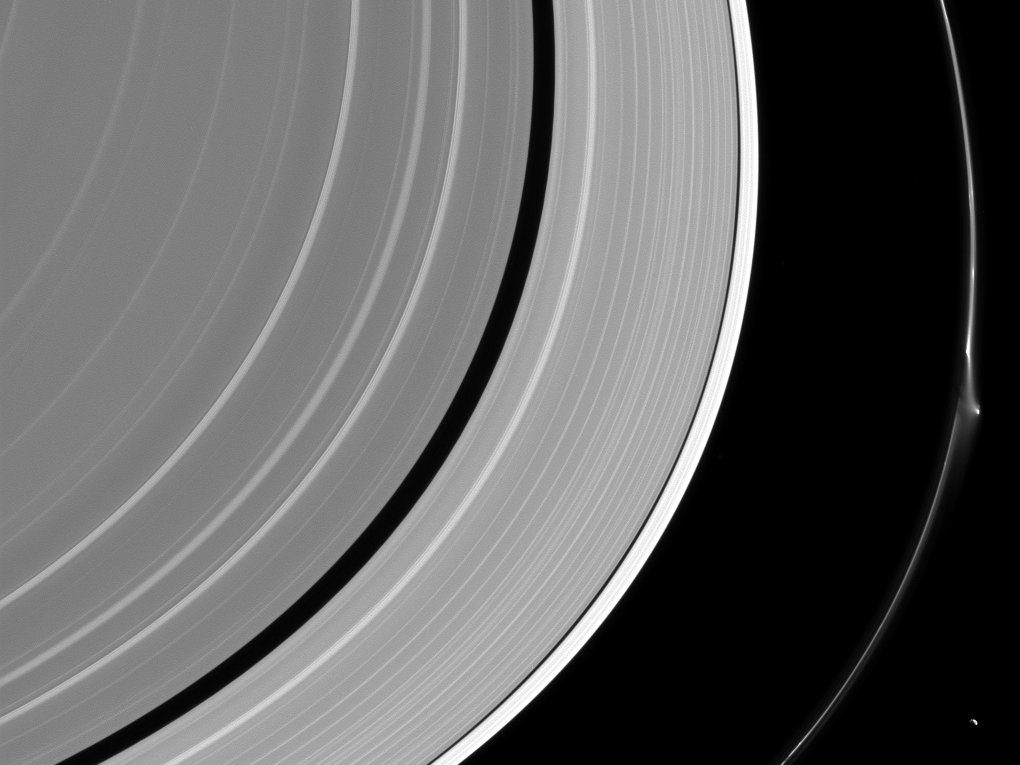
Smeared Out of Perfection
Scientists recently found a smeared section on Saturn’s outermost ring, known as the F ring. The “vandalism” was caught using NASA’s Cassini spacecraft.
But apparently, this isn’t uncommon. In fact, the F ring is Saturn’s most dynamic ring, and scientists can actually see the F ring continuously changing in as short as a few hours and researchers have been observing trails left by objects punching through the particles for years.

In 2012, researchers began scouring through and magnifying thousands of photos in a mission to investigate the mysterious behavior of the F ring. “The F ring has a circumference of 550,000 miles (881,000 kilometers), and these mini-jets are so tiny they took quite a bit of time and serendipity to find,” said Nick Attree, an imaging associate for the Cassini. “We combed through 20,000 images and were delighted to find 500 examples of these rogues during just the seven years Cassini has been at Saturn.”
Saturn’s F ring is its narrowest ring, which is a 30-300 feet wide layer made of trillions of dust, rock, and ice particles and has a circumference of about 550,000 miles (881,000 kilometers).
And while it’s a very pretty sight, make no mistake: these particles travel at violent speeds, with some moving at thousands of miles per hour. And these particles range between sizes as small as a grain of sand, to masses bigger than a skyscraper.
What’s the Culprit?
The disruptions are believed to be caused by some objects embedded within the ring and interact with some of the other objects in it, and with the influence of Saturn’s moon Prometheus, producing “mini-jets” that blow some of the particles out of formation.
“[Prometheus] acts as a cosmic shepherd, sculpting the F ring as it makes its orbit around Saturn,” National Geographic writes. “But the moon’s route isn’t perfectly circular, and its uneven pull can create clumps inside the ring that then shoot out as jets.”

The recent collision observed through the Cassini on April 8 happened within a day or so of being caught in the act, and the particles have pretty much put themselves back into order within two months.
In many ways, Saturn’s rings are perfect for leaving clues about cosmic events around it, since any collisions leave trails of particles from the rings.
“You get to expecting in planetary science for things to have happened millions of years ago, and you don’t think to ever get to observe things actively happening,” Weiss said. “But that’s the kind of funky thing with Saturn’s rings. You can actually see evidence of things that happened yesterday or the day before.”